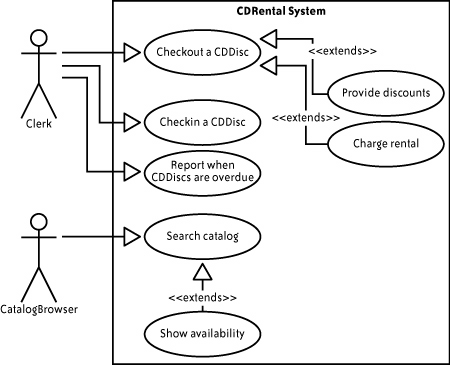4.1. The Rest of the Story
| < Day Day Up > |
| To understand more fully the system we are creating, we sketch out the remaining use cases. Figure 4-1 shows a graphical view of the relationships between the different cases. The following use cases are written using the abstractions that Sam, Tim, and I agreed upon:
Figure 4-1. Use cases for Sam's system For the first production release of the system, we want to ensure that we have the minimum feature set (MFS). The MFS contains the minimum set of requirements that will provide a usable program. For Sam's system, a program having a check-out feature without a check-in feature would be unusable. |
| < Day Day Up > |
EAN: 2147483647
Pages: 175